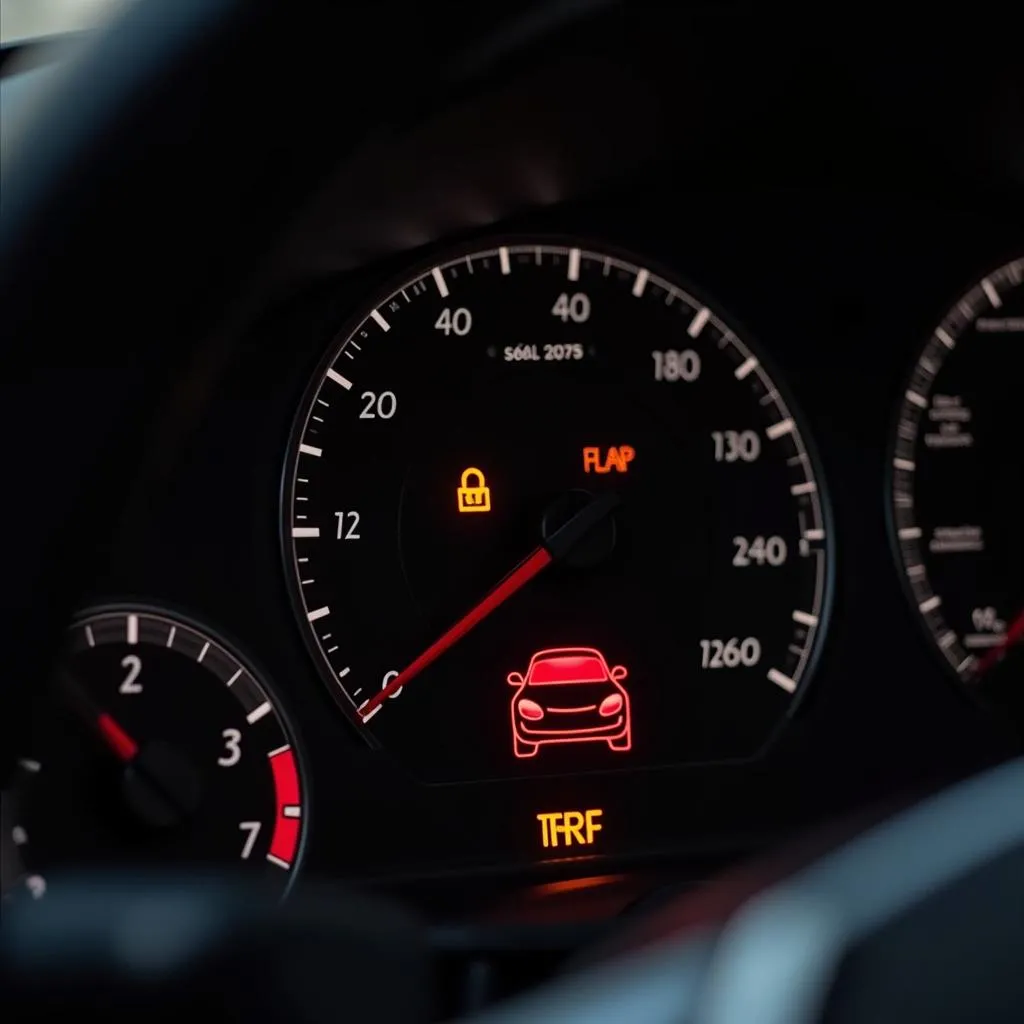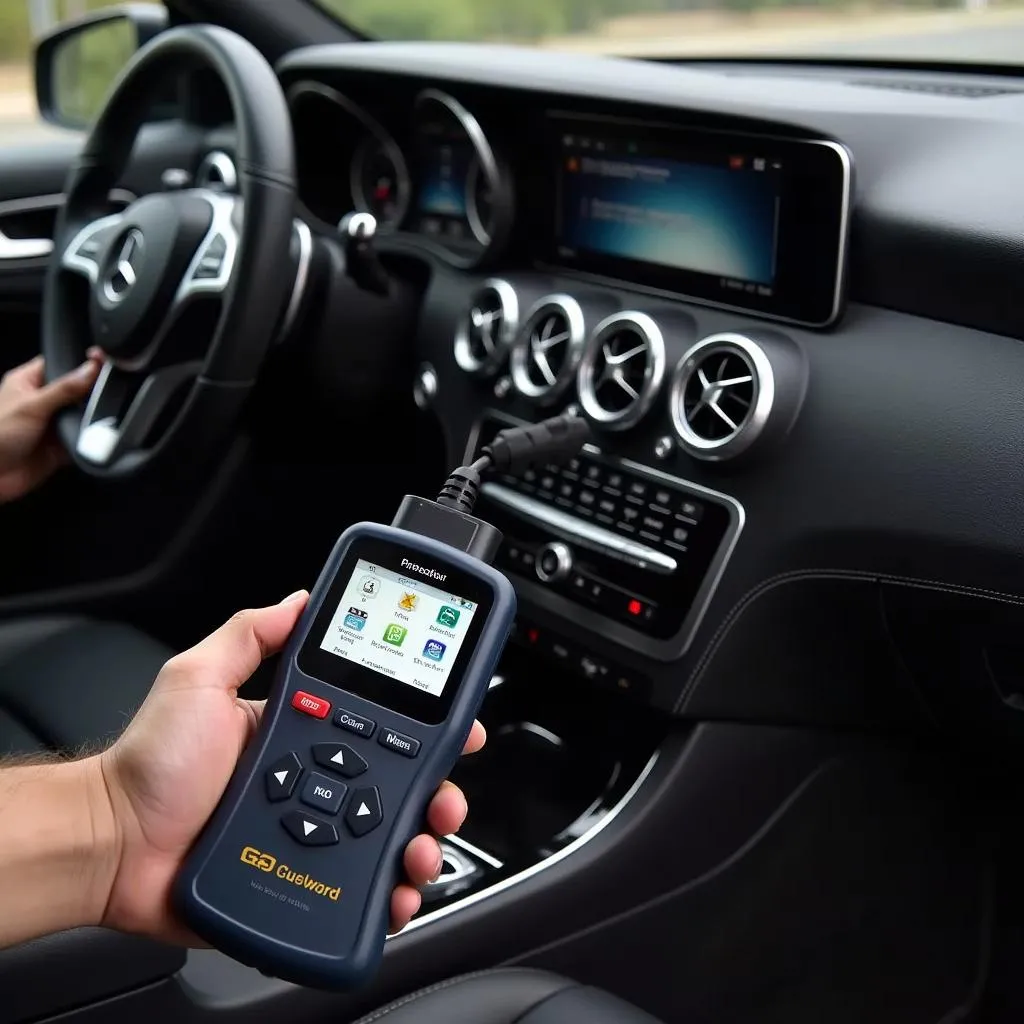Experiencing problems with your Mercedes anti-theft system? A malfunctioning system can be a major headache, potentially leaving you stranded. While it’s always best to consult a professional for complex car issues, understanding how to deactivate the anti-theft system on your Mercedes can be incredibly helpful for minor glitches or emergencies.
Understanding the Mercedes Anti-theft System
Your Mercedes anti-theft system is designed with sophisticated technology to protect your vehicle from theft. It utilizes an immobilizer system linked to your key fob. When you insert your key or are near your car with a keyless entry system, the fob transmits a signal to the car’s computer, disarming the immobilizer and allowing the engine to start. If the signal is not recognized or there’s a system error, your car might interpret this as a theft attempt, activating the anti-theft system and preventing the engine from starting.
Common Signs of Mercedes Anti-theft System Issues
Recognizing the signs of a potential problem with your anti-theft system can save you time and frustration. Here are some common red flags:
- Rapid flashing dashboard lights: If you notice your car’s dashboard lights, especially the red flashing light that resembles a car with a padlock, blinking rapidly when you try to start your car, this often signals an anti-theft system issue.
- Engine Cranks but Won’t Start: The engine turning over but failing to fire up can often indicate an immobilizer problem, a key component of your anti-theft system.
- Key Fob Malfunctions: If your key fob is not working correctly, like failing to lock/unlock the doors or having a weak signal, it can trigger the anti-theft system. This could be due to a dying battery in the key fob or a problem with the fob itself.
 Mercedes-Benz dashboard with warning lights illuminated
Mercedes-Benz dashboard with warning lights illuminated
Essential Tools for Diagnosing and Addressing Anti-theft Issues
Before attempting any troubleshooting, having the right tools is crucial. Here’s what you’ll need:
- A professional-grade OBD2 Scanner: This tool allows you to read and diagnose the error codes related to your Mercedes’ anti-theft system.
- Your Mercedes Owner’s Manual: Your owner’s manual is an invaluable resource providing specific details about your car model’s anti-theft system and key fob programming instructions.
Steps to Deactivate Your Mercedes Anti-theft System
Important Note: Deactivating your Mercedes anti-theft system should only be performed for troubleshooting minor issues or in emergency situations. If you suspect a serious malfunction, always contact a qualified Mercedes technician or your dealership for assistance.
Step 1: Basic Checks
- Check your key fob battery. A low or dead battery can often trigger anti-theft problems. Replace the battery if necessary.
- Try a spare key. If you have a spare key, try using it to unlock and start your vehicle. This can help determine if the issue lies with the original key.
- Inspect the key for damage. Look for any physical damage to your key fob or key. A damaged key may not be able to communicate properly with your car’s anti-theft system.
Step 2: Using the OBD2 Scanner
- Connect the OBD2 scanner: Locate your car’s OBD2 port, usually found under the dashboard on the driver’s side. Plug in the OBD2 scanner.
- Turn the ignition to the “on” position. Don’t start the engine.
- Access the anti-theft system module: Using the scanner’s menu, navigate to the module labeled “Immobilizer” or “Anti-theft.”
- Read and clear error codes: The scanner will display any stored error codes. Note down these codes as they will provide valuable clues about the specific problem. Clear the codes using the scanner’s function.
 Connecting an OBD2 scanner to a Mercedes-Benz
Connecting an OBD2 scanner to a Mercedes-Benz
Step 3: Synchronization (If Necessary)
- Consult your owner’s manual: Refer to your Mercedes owner’s manual for model-specific instructions on re-synchronizing your key fob to your car. This process can vary between models.
- Perform the synchronization procedure. This might involve a sequence of actions like inserting and turning the key, pressing buttons on the key fob, or using a combination of both.
Step 4: Test and Observe
- Remove the OBD2 scanner.
- Attempt to start your car. If the issue was a minor glitch and the error codes have been cleared, your vehicle should start.
FAQs about Mercedes Anti-theft Systems
Q: Can I permanently disable my Mercedes anti-theft system?
A: Permanently disabling your anti-theft system is highly discouraged. It leaves your vehicle vulnerable to theft. Most temporary deactivation methods are designed for troubleshooting and require the system to be reactivated.
Q: My key fob is completely dead. Can I still start my car?
A: In most cases, starting your car with a completely dead key fob is not possible due to the immobilizer system. You’ll need to replace the key fob battery or have a new key programmed.
Q: What should I do if the anti-theft light stays on even after trying these steps?
A: If the problem persists, it’s essential to consult with a qualified Mercedes technician or your dealership. There could be a deeper issue within the anti-theft system, such as a faulty component, that requires professional attention.
Need Expert Assistance?
At Cardiagtech, we offer a wide range of diagnostic tools and software to help you understand and address your car’s issues. For more in-depth guides and access to professional-grade equipment, visit our website at Cardiagtech.
Remember, “how to deactivate anti-theft on mercedes” and “how to deactivate anti-theft protection mercedes” are common searches, but professional help is always recommended for persistent problems. Understanding how to use the right tools like those found on CARDIAGTECH can empower you to tackle minor car issues effectively.
Disclaimer: This information is provided for general knowledge and informational purposes only, and does not constitute professional advice. Always consult with a qualified automotive technician before performing any work on your vehicle.
